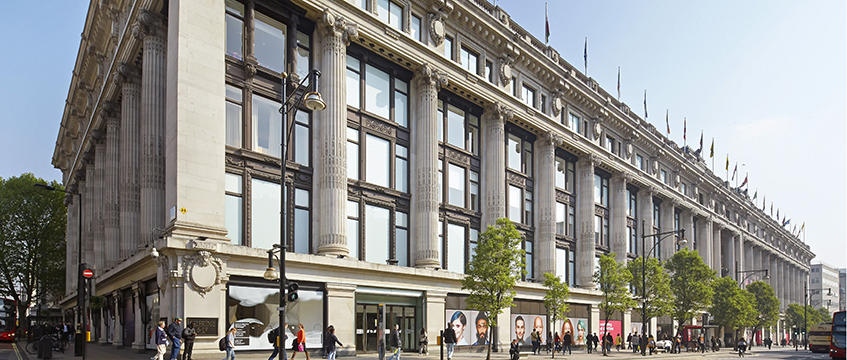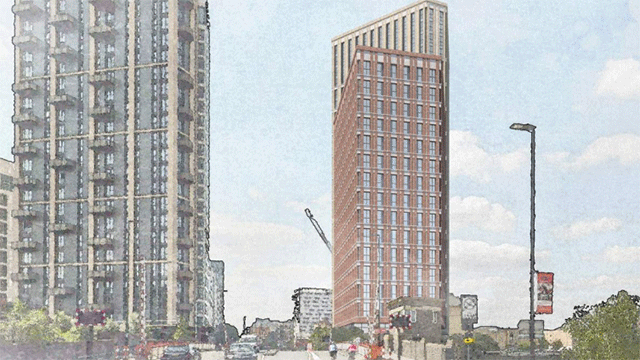Flexible office operator Clockwise is ramping up its European expansion, with an eye to adding 50,000 sq ft of space in the UK and 250,000 sq ft across the continent.
Next month the company will open the doors at a new site in the Netherlands in the Hague’s Koninginnegracht district. Then comes an opening in the Martinistrasse, an office block in Bremen, Germany, and later in the year a new property in Antwerp, Belgium.
The expansion echoes the activity of Clockwise’s owner, real estate investor Castleforge, which set up the business in 2017 as what its top team called “a refreshed and better designed Regus”.
Castleforge has since been converting part of most of its office purchases into Clockwise space – the properties in the Hague and Bremen marked its first acquisitions in the Netherlands and Germany.
Castleforge’s portfolio is also growing in the UK, with Clockwise already operating in 12 of its sites. Last month, Castleforge struck a £257m deal to buy Winchester House, EC2, the soon-to-be-former headquarters of Deutsche Bank, with plans for a £1bn redevelopment. The companies declined to comment on whether Clockwise will operate in that new site.
Helping to drive growth is chief operating office Alexandra Livesey (pictured), who joined the company in 2020.
As the ‘hotelification’ of the office continues, her experience as chief operating officer of aparthotel and PRS specialist Native and earlier career in the hotel industry are proving vital for Clockwise.
Livesey sat down with EG to discuss the company’s expansion plans, how Covid has woken occupiers up to wellbeing needs, and the agility that comes with being a privately owned operator.
Finding the rhythm
Clockwise has grown rapidly. When Livesey joined the company, it had three locations totalling around 100,000 sq ft.
Now it operates around 500,000 sq ft and close to 6,800 desks, with business picking up as workers head back to the office and are “slowly stepping back in and finding their rhythm”.
Livesey predicts that by the end of the year the portfolio will be close to 8,000 desks.
But in an increasingly crowded marketplace, “running a flex operation is not easy”, she said.
The space has to offer “more than just collaboration” if it is to tempt customers to a Clockwise location rather than an offering from the sea of other rapidly expanding providers.
“None of us can go into a space and collaborate for eight hours, we would be brain dead,” said Livesey.
“We don’t sit at home and just do deep work for eight hours. We have times during the day where our energy levels change and we need to do different things.
“The workspace that you provide, being flexibly traditional, needs to reflect that these days to get the best out of employees.”
One way in which the company is attempting to create a home away from home and to future-proof its sites is by making data-led decisions to pair zones of the buildings with their proposed function or way of working, using specific sounds in certain areas to “either help you with focus or get you into the chatty, collaborative mode”, as well as curated lighting and specific temperatures in dedicated zones to foster productivity.
“Three or four years ago, nobody talked about hospitality in the office world,” said Livesey.
“Covid has pressed pause on so many things but in the void we started becoming more aware of our needs and what makes us excel and what holds us back.
“You can’t take that knowledge away from people and you can’t force them back into a lifestyle pre that self-awareness. What you have to do is alter the space and your provision for this new mindset.”
Control your destiny
Not all flex models are created equal. Livesey said Castleforge and Clockwise’s owner-operator model puts the company in “quite a fortunate position” when it comes to deciding which opportunities are ripe for the picking.
She described her relationship with the Castleforge team as a “really close partnership” that is “full of open discussions around what is the best strategy for what it needs and makes sense from an investment perspective”.
“On the acquisition side, having the operators in-house in the selection process, in the purchase process and the design process really helps you define your projects correctly and helps make the right selections,” she said.
If the landlord and operator have a close relationship, “you control your own destiny”, she added, and can better ensure “your own response rate and service level”.
In a crowded market in which “there isn’t space for everyone”, that can directly impact customer satisfaction.
Maintaining “a commonality in service, culture and quality across all of the sites” is vital for the success of a flex brand, Livesey said.
At the same time, Livesey doesn’t want any site in her growing portfolio to lose a sense of local individuality.
“Whether we have 50, 100 or 500 sites, my overall aim is to never feel like one of the big public [operators] where once you’re in the building, you’re not quite sure which city you are in,” Livesey said.
“That local factor – that you always feel like you’re home in that city and you’re part of that city while you’re there – that’s what I’d like to retain.”
To send feedback, e-mail chante.bohitige@eg.co.uk or tweet @bohitige or @EGPropertyNews











